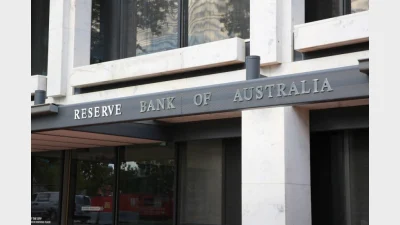CIO cautions crypto’s high volatility makes it unsuitable for super



Despite the meteoric rise of cryptocurrency over the past year, the chief investment officer at Colonial First State (CFS) – with some $150 billion under management – says the volatile asset class lacks the appropriate characteristics for inclusion in a superannuation portfolio.
In a recent webinar, Jonathan Armitage, chief investment officer at CFS, said that while many investors openly discuss their cryptocurrency gains, they tend to remain silent during significant downturns, highlighting the inherent volatility of the market.
“[Crypto] has been very volatile. You will hear an awful lot of stories from people about when they have made gains. Those same people tend to go quite silent when crypto or bitcoin goes down,” he said.
“I think it’s worth reminding people that there have been several occasions where cryptocurrencies have fallen over 60 per cent in a very short period of time, we are talking weeks.”
According to Armitage, cryptocurrencies are “probably one of the more volatile types of investments” the firm assesses and that it can be challenging to identify the drivers behind their dramatic price movements.
“The challenge with the volatility of cryptocurrencies is that, quite often, it’s difficult to point to the real reason as to why a price is moving up and down,” he said, adding it is “not unusual” for these investments to gain 10 per cent or lose 10 per cent in a single day.
He said that over the past 37 years, the ASX has experienced only 21 days in which it declined by more than 5 per cent in a single day. In contrast, there have been 96 times when bitcoin has declined over 5 per cent over the same time period.
According to the ASX’s Australian Investor Study 2023, around 15 per cent of Australian investors hold cryptocurrency and nearly 30 per cent of prospective investors are interested in investing in crypto in the next 12 months.
However, Armitage considers cryptocurrencies to have a “fairly speculative” nature, in contrast to more traditional asset classes like equities and bonds, where investors, such as CFS, can better gauge potential future returns.
“The underlying focus has been on, how is this investment going to help continue to build the wealth of the members who sit within our super fund?” he said.
For these reasons, Armitage said that he does not believe the characteristics of cryptocurrency “are the right ones to have within a superannuation portfolio”.
“More recently it’s been very volatile, and even when equity markets have declined, it’s not actually provided any form of protection,” he said.
He did, however, flag opportunities in blockchain, the underlying technology behind cryptocurrency, describing this area as “very interesting”.
“The opportunity to use that technology to perhaps reduce the friction that sits within the financial system, we do think is very interesting,” he said.
“And there are a number of companies, particularly the listed arena predominantly in the US that we’re invested in, that do provide access to those underlying technologies.
“Like a lot of things, you can use an old-fashioned analogy, you’re much better off owning the picks and shovels behind a new phenomenon than spending your time looking for the gold.”
Earlier this year, Brian Parker, the chief economist of $300 billion fund Australian Retirement Trust, also voiced scepticism about committing member funds to cryptocurrencies like bitcoin.
“If I think about bitcoin, even if I have access to a bitcoin ETF, why should I buy it? It still doesn’t pay me any interest, it’s a highly speculative investment, I still can’t value it in any fundamental way, and I don’t know how it behaves over a number of economic cycles,” Parker told Super Review.
“I can’t be sure about whether it’s a risk-on asset or a defensive asset and so, it remains a very speculative area.”
Any decision to include bitcoin in a portfolio would require more information on its inverse and positive correlations to other asset classes along with understanding how it behaves across different market cycles, he said.
“At that point, you might be able to make a decision as to whether to include it in a portfolio, but I don’t think we’re at that point yet,” Parker said.
“From the point of being a super fund, our job primarily is to invest in a range of assets that deliver both income and growth, and frankly, that still means that shares, bonds, private equity, property, private credit make a hell of a lot more sense than speculative digital currencies.”
Recommended for you
The structural shift towards active ETFs will reshape the asset management industry, according to McKinsey, and financial advisers will be a key group for managers to focus their distribution.
ASIC has warned that practices across the $200 billion private credit market are inconsistent and, in some cases, require serious improvement.
A surge in electricity prices has driven the monthly Consumer Price Index to its highest level in a year, exceeding forecasts.
Infrastructure well-positioned to hedge against global uncertainty, says investment chief.








